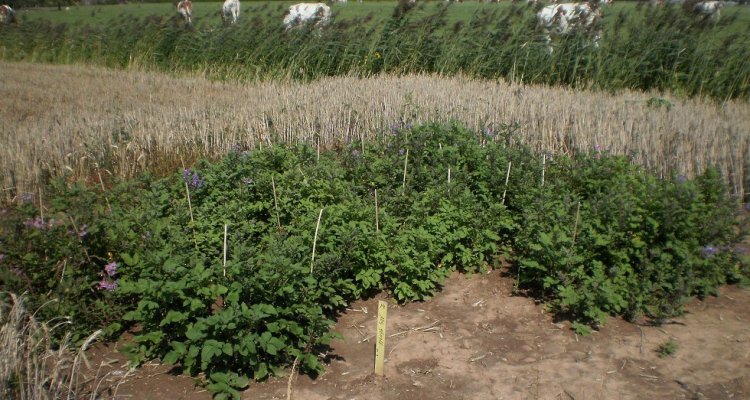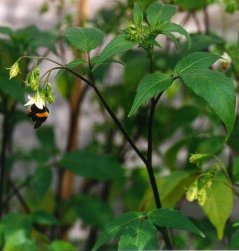
Regeneration of potato
Seed dormancy
Some dormancy is normal in true potato seed. Species like Solanum acaule often show substantial amounts of dormancy. Fresh seeds may germinate irregular or not at all. In many cases germination will regular after a storage period of about a year. For some accessions this period is two years.
Vernalization
None.
Sowing
To improve germination, fresh as well as old seeds are treated with about 700 ppm gibberellic acid (GA3) for 20-24 hours (in the dark, because light breaks down the GA). In some cases a GA treatment of 48 hours caused a higher fraction of abnormal plants. Seeds are sown about 5 mm deep in seed trays at about 20°C, early January for the greenhouse and early March for the field isolation plots. Alternative germination methods are available from the Seed Information Database, maintained by KEW.
Planting
2-4 weeks after sowing 30-40 seedlings per accession are transplanted in 8 cm pots. 20-25 plants are used for rejuvenation, the rest of the material is burned. The plants are tested for quarantine diseases. For the greenhouse 20 plants are transplanted into 15 cm pots. As most potato species are out-crossing, the regeneration is carried out under spatial isolation in (multicrop) isolation plots in a wheat (previously barley) or Triticale field or in a greenhouse by means of hand pollination. A field isolation distance of at least 40 meters is used (van Soest, 1983). Isolation distances of 10, 20, 40 and 80 meters have been investigated and discussed by Schittenhelm & Hoekstra (1995). For safety reasons, accessions with only few seeds or fertility problems are rejuvenated in the greenhouse. A pollen-mixture of all plants in the accession is used for hand pollination.
| Greenhouse | Isolation plots (Triticale) | |
|---|---|---|
| plants / accession | 20 | 25 |
| isolation distance | 50-70 cm | > 40 m |
| pollination | by hand | by insects |

Harvesting
A population size of at least 20 plants is used to prevent in particular the loss of S-alleles. To furtheron minimise genetic drift at the next seed increase, seeds from about an equal number of fruits per plant are used. The fruits are bulked and cleaned manually or with help of a cutter. The general rejuvenation goal is to produce at least 10.000 seeds per accession.
Pest and disease control
Preventive
- The field isolation plots are weekly sprayed against late blight (Phytophthora infestans) with alternating fungicides.
- If necessary, the field plots are surrounded by wire-netting to prevent rabbit glutton.
Non-preventive
- Pesticides to control Colorado Potato Beetle (Leptinotarsa decemlineata), aphids or slugs.